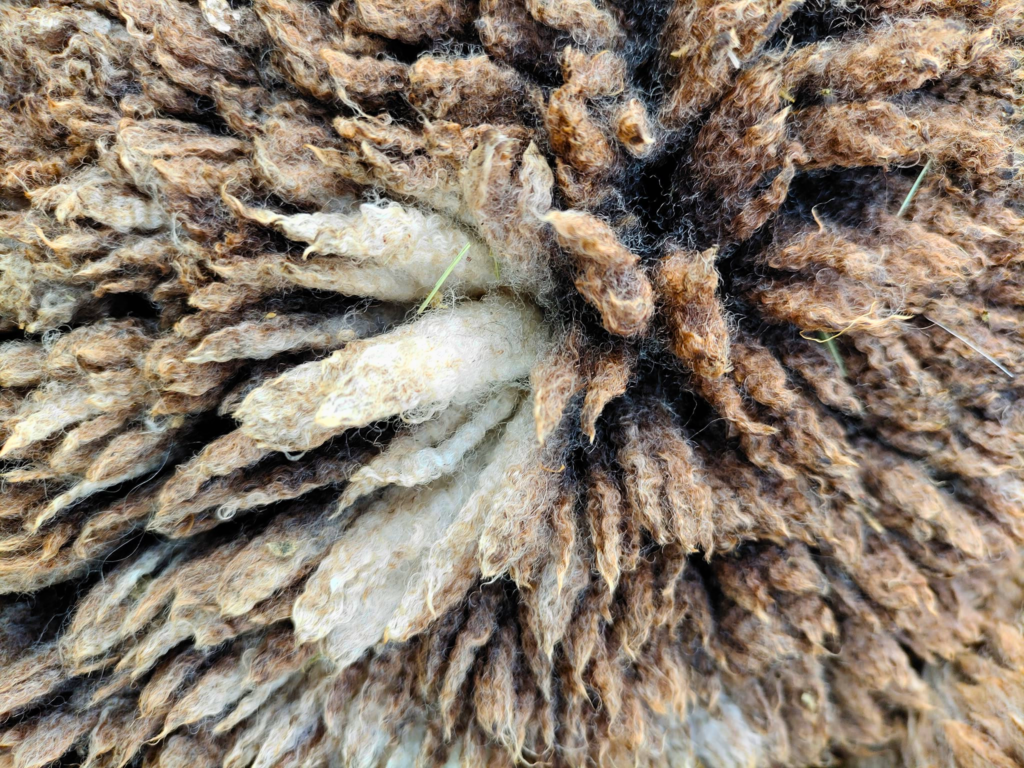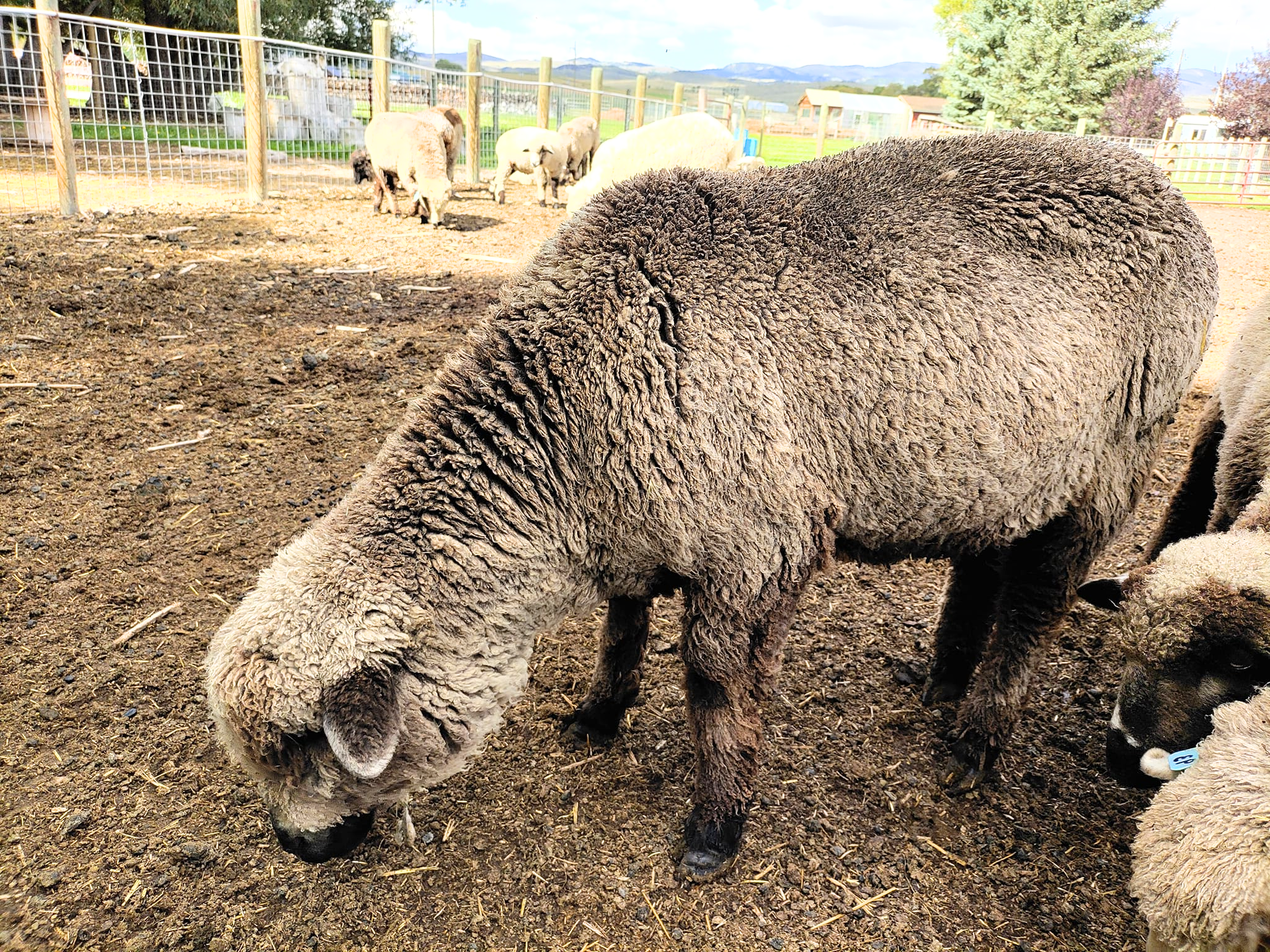Rambouillet sheep, developed in France, was initially bred to produce wool and meat. However, it’s now frequently used as an exhibit animal. This breed has distinct traits, like its thick wool coat.
If you’re looking to compare the various kinds of sheep breeds available, you’ll face many choices. Whether you are thinking about raising sheep, adding to your flock, or maybe just curious, here is information about Rambouillets and advantages and disadvantages of raising them.
The great news is they offer many purposes. You can raise them for milk, wool, and meat, including lamb.
Rambouillet Sheep
A Rambouillet sheep is a breed originating from France. Rambouillets are famous for their luxurious wool quality, used to make high-quality fabrics. What’s truly unique about this breed is its wool.
Ewes can create a wool that weighs up to 17 pounds with yields of up to 55 percent. The staple length is usually approximately 2 to 4 inches, and the fiber’s diameter is 20 to 24.5 microns.
Rambouillet ewes were bred with Lincoln rams to make the sought after medium-wool producing Columbia sheep breed.
If you decide to raise Rambouillets, you do not have to choose between milk, meat and wool. It’s not just a top wool-producing breed, it’s also the biggest of all wool sheep with fine quality meat and, therefore, a good breed for meat production. Before slaughter, ewes can provide your farm with milk.
Rambouillet Sheep Size and Weight
Rambouillet rams are of average size, weighing around 250 and 300 lbs. Ewes weigh about 150 to 200 pounds.
Rambouillet Sheep Origin
This breed is among the oldest recorded, with its roots dating back more than 200 years. It’s derived from Spain’s famed Merino sheep, among the most prolific wool bearers. Merinos indeed continue to be sought-after as wooly breeds today.
In the past, the Spanish government knew precisely the kind of sheep they had, and they did not want to lose them! So, exporting these sheep was strictly prohibited.
In the latter half of the 1700s, this policy changed when the King of Spain decided to send over 350 Merino ewes and rams to his brother, Louis XVI in France, to assist in improving their herd. As a result, the French government launched an ongoing sheep-breeding program at the Rambouillet farm and a breeding program that continues today.
Merinos were also introduced into Germany. Breeders used the French Rambouillet sires. Due to this, there are a variety of genetic breeds of Rambouillet that you could see, with some traceable to France and others traceable to Germany.
You may also hear this breed referred to as the Rambouillet Merino or the French Merino. In 1889, the Rambouillet Association was formed in the US to protect the breed, resulting in over 50% of the sheep found in west American cattle ranchers coming from Rambouillet origin.

Rambouillet Sheep Purpose for Raising
Here are some of the most striking reasons, uses, and purposes for considering Rambouillets to add to your flock.
1. Availability
The Rambouillet sheep breed is a strong and intelligent animal that can produce superior wool. It was bred for its size, high fertility, and dense fleece. The French government boosted the lambing rate of this breed as they believed it would produce more than other breeds in the past. Nowadays, you can find Rambouillet sheep throughout Europe and North America. Due to this wide availability, it’s not hard to find lambs, ewes, or rams for your own farm.
2. Heavy Fleeces
This breed is among the superior wool producers you can find. They have thick fleeces and are bred with long and medium coarse wool sheep, resulting in robust ewes that have heavy, appealing wool with moderate weight. Another good sheep for medium wool is Columbia sheep.
3. Great Market Lambs
If you’re looking to breed animals for food (meat and milk), Rambouillet sheep are an excellent choice. They are heavy, and their lambs grow quickly when fed properly. They’ll gain enough weight at only six to nine months old. Rambouillets can also be raised for mutton if you’d like to grow them longer.
4. Milk
While they are often recognized more for their meat than their milk, Rambouillet ewes will provide milk. Its characteristics are good for making cheese and yogurt.
5. Hardiness
Rambouillet sheep are tough, robust animals that thrive in all climates. They do well in sub-par pastures, but the proper rotation of pastures and quality feedstuffs are vital. They also possess strong flocking instincts, which is a huge advantage when you decide to rear the sheep in a vast space. Another hardy sheep breed which is known for its high-quality meat is Texel sheep.
6. Rambouillet Sheep Temperament
Rambouillets, including rams, are friendly, serene and quiet. They don’t show aggression, nor do they fight. They enjoy humans, mainly concentrating on their own business and moving around calmly and alertly.
7. Cross Breeding
Rambouillet sheep are commonly used in the creation of new breeds. They were bred to develop an American Blackbelly sheep, which was later crossed with the Mouflon and the Barbados Blackbelly to produce stunning horns, sought-after at Western ranches. Learn about animals with horns.
Rambouillet Sheep Characteristics
Here are some tips to consider if you decide to buy and raise Rambouillet sheep for your farm. They make great pets because they are docile.
1. Wool Blindness
Rambouillet sheep are renowned for their exceptional wool production, but there’s a compromise there. While Rambouillets produce plenty of wool, when the thick covering extends up and down into the face, it could cause problems.
In some extreme cases, it has resulted in wool blindness caused by the wool blocking sheep’s eyes completely. Trimming wool around their eyes is essential.
2. Meat Conformation
While Rambouillet lambs and sheep produce meat that many people consider satisfactory, some critics say they aren’t very tasty. Rambouillets have more meaty bodies than their descendants, but Merinos have meat with less conformity and yield lower edible or saleable meat.
So, breeders can often cross Rambouillets with sheep with better conformation and taste. It is also important to consider the difference between raising lambs vs sheep for meat.
3. High Yolk Factor in the Wool
When raising Rambouillets to harvest the wool, bear in mind that they have an extremely high yolk factor. If you’re unfamiliar with wool harvesting, be aware that an increase in the yolk percentage indicates that wool will be inclined to shrink. While this won’t be a concern for most people, it is something to be aware of.
4. Aesthetics
Rambouillet sheep will look different when they are sheared or covered with wool. Rambouillets have huge wrinkles visible when they are shorn and not covered with wool. They are white-faced sheep like Cheviot sheep and Merino sheep.
5. Breeding Season
Rambouillet sheep can be reared in the same way as you would for other types of sheep. However, it is important to remember that they can endure lengthy breeding seasons.
While they don’t necessarily breed all year long, they’re more seasonally dependent than other breeds, such as with Icelandic sheep. Have separate housing for ewes and rams breeding so you can control the mating and know when lambing is expected to take place.
5. Shearing
It is essential to shear your Rambouillets a minimum of twice every year. They grow wool quickly, and the more frequently you shear them, the better quality your wool is likely to be. Shearing can also help prevent problems like flystrike, an illness that heavy wool-bearers such as Rambouillets are susceptible to.
You can learn how to shear a sheep, or hire a professional, and watch how they do it to decide if this is something you want to take on.
Breeding
Rambouillets, like Merino and Dorset sheep, have a longer breeding season than others such as Southdown and Cheviot. Because long breeding seasons are genetically dominant, in time you can work to increase the length of the breeding season through selective breeding.
Raising Rambouillets
Whether you are planning to raise Rambouillets, Suffolk sheep, or any sheep breeds, it is essential to raise more than one sheep. Do not just raise one. In addition to being social animals, sheep use each other for protection.
Sheep take their cues from other sheep. They will be healthier and safer in flocks. It will also make the sheep owner or herders job easier when leading sheep out to pasture and back to their shelter at night. Sheep follow other sheep.
When you consider that you will need to raise more than one sheep, consider how much property and pasture area you have. It is important to know how many sheep per acre you can raise for a healthy flock.
In addition to pasture, water, and food, sheep require protection from predators as well as the elements. They need to be able to stay dry and protected from weather with a proper shelter.
Are Rambouillet Sheep Right For You?
Rambouillet sheep have become a loved breed and for a good reason. They have a variety of attractive characteristics that make them among the best farm animals to raise among farmers and backyard homesteaders.
Rambouillets are ideal for meat and wool. They are also quite comfortable and gentle, making them suitable for pet care or exhibition purposes. The American Rambouillet Sheep Breeders Association can provide additional information about their characteristics, color, hardiness and more.
Depending on your reasons for wanting to raise sheep, there are certainly negatives associated with the raising of the Rambouillet sheep breed. However, that’s the case with all options you may be considering.
Compare the pros and cons to determine whether Rambouillet sheep are the right choice for your homestead or backyard farm.

